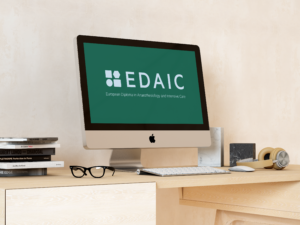Newsletter 2022
Newsletter April 2022: Education of the medical students regarding patient blood management
Chief Editor notes: We are pleased to publish in this issue summaries of two very interesting lectures to be presented during Euroanaesthesia 2022, and thank those speakers who answered our invitation to send their papers to the ESAIC Newsletter.
Tamara Skrisovska
Tamara.skri@seznam.cz
Despite its huge potential to improve healthcare and affect patient outcomes, patient blood management (PBM) principles have not yet been adopted broadly. From the available data, the education gaps and lack of awareness stand as top inhibitors for PBM implementation (1). The education process begins with the medical students. Although many universities included some form of PBM educational activities into the curriculum, the gained knowledge and methods of learning are inconsistent and heterogeneous regarding the timing, content, and emphasis placed on teaching transfusion medicine (2,3).
Concerning the teaching methods, there has been a shift from passive receiving of information during lectures towards modern, interactive approaches. Students are expected to actively participate in the learning process, apply their critical thinking and sharpen their skills. Medical students today are natives of the digital world. Their expectations regarding teaching methods include convenience and interaction. The learning could be fully online, in-person, or hybrid (a combination of online materials and in-person teaching). E-learning platforms with interactive modules present affordable and easily accessible sources of information. E-learning is used in a standardised form as a part of the UK´s National Health Service (NHS) program teaching PBM. From data and experience, any curriculum that contains in-person teaching by faculty is preferred by the students over online-only education (4).
The hybrid education modalities can be delivered using collaborative learning methods: Flipped Classrooms (FC), Problem-based learning (PBL), or Team-based Learning (TBL) sessions. Students work to some degree with online materials in a form of pre-reading materials or virtual patient scenario sessions (e.g. Jehovah’s Witness in The Car Accident). In comparison to PBL, the TBL concept enables a more cost-effective advantage in learning strategies in classes with a high student-faculty ratio (e.g. up to 200:1, usually the group consists of around 60 students), thus allowing attendance up to 10-15x more students per session than in the PBL.
The teaching methods can also include a simulation component. Simulation medicine is a dynamically developing specialisation that allows engaging the participants in real clinical situations while being in a safe learning environment. It includes various possibilities for presenting the learning content to students. One example can be a standardised patient (usually an actor), with whom students practice communication skills, discuss the risks and concerns, and obtain consent. Actors can simulate different types of behaviour (depressive, aggressive, etc.) and provide feedback on how the student´s approach was perceived. This helps to further develop appropriate verbal and non-verbal communication when interacting with a patient.
Other options are complex high-fidelity simulations scenarios. These require correct decision-making, team communication, and clear role distribution with excellent leadership strategy. The scenarios help to build up the mindset of correct differential diagnostics, situation awareness, practice team cooperation, and receiving immediate feedback on the participant´s performance in form of a structured debriefing. High fidelity simulation for PBM could cover e.g. the management of adverse events after a blood transfusion or the scenario of the massive bleeding management protocol. During the post-simulation debriefing, the topic of patient pre-interventional optimisation, rational use of blood units and their alternatives, point of care laboratory testing, and interdisciplinary communication, are being discussed. When studies compared simulation and didactical teaching methods, the data favoured simulation as it has greater immediate knowledge acquisition compared with an online-only or a hybrid curriculum. (4)
To engage students in the education process, the presented task should be adequately challenging, focused, relevant, and follow the step-wise approach (building up from basic science, physiological and pathophysiological mechanisms to clinical application). The level of acquired knowledge should be measurable with validated assessment tools and students should be exposed to the topic repetitively with adding complexity to the presented problem.
The transition from high school to the academic sphere of the medical faculty may be challenging. The task of the educator is to provide the knowledge-base and support on the journey from adolescents to health care professionals and facilitate growing up to related duties and responsibilities. The way the education process is established affects not only students’ basic knowledge, but also their attitudes and behaviour in the future. Ideally, the aim would be to create a safe learning environment, compliant with the adult learning theories and including the only basic assumption that all students are generally motivated to make the right decisions and deliver good healthcare. Adequate training in basic transfusion practice is an essential requirement to prevent unnecessary blood product transfusions, complications, and patient harm. To be able to motivate students to implement the PBM strategies at their workplace in the future, their knowledge background, attitude, potential mental barriers, and behaviour patterns should be taken into consideration and addressed during the learning process. Irrespective of the chosen teaching method, the complex PBM implementation should be delivered in concrete measurable steps.
References
- Hofmann A, Spahn DR, Holtorf A-P, PBM Implementation Group, Isbister J, Hamdorf J, et al. Making patient blood management the new norm(al) as experienced by implementors in diverse countries. BMC Health Serv Res. Dec 2021;21(1):634.
- Garraud O, Brand A, Henschler R, Vuk T, Haddad A, Lozano M, et al. Medical student education in transfusion medicine: Proposal from the “European and Mediterranean initiative in transfusion medicine”. Transfusion and Apheresis Science. Oct 2018;57(5):593–7.
- Flausino G de F, Nunes FF, Cioffi JGM, Proietti AB de FC. Teaching transfusion medicine: current situation and proposals for proper medical training. Revista Brasileira de Hematologia e Hemoterapia. Jan 2015;37(1):58–62.
- Konia MR, Richtsfeld M, Johnson AD, Lougee M, Cohn C, Morgan S. An Observational Study of 3 Different Transfusion Medicine Teaching Methods for Medical Students. Transfusion Medicine Reviews. Apr 2018;32(2):117–22.
[maxbutton id=”1″ url=”https://www.esaic.org/newsletter/” text=”Read the Newsletter” ]











